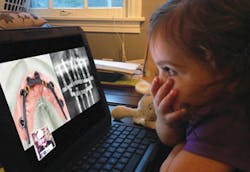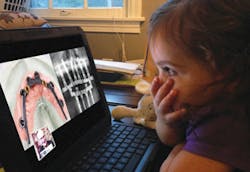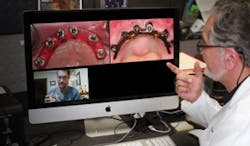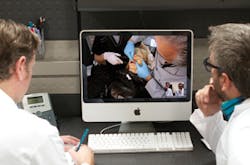It's Time to Communicate Face to Face
By Joseph J. Massad, DDS
Welcome back. This month my discussion addresses the many uses of video conferencing in dentistry. For the last 10 years, I have been using applications such as Skype to communicate with my family when they were out of the country, and in the last seven years, I have been able to upgrade the video cameras to actually view dental cases with my laboratory technician and/or milling technicians around the globe. This type of technology has improved to the extent that we are able to see detail in dental models or appliances. The clarity of the picture depends, of course, on your Internet connection and the quality of camera that is available.
In order for us to utilize this as a tool in communicating with our prosthetic technicians, it is appropriate to consider getting either a camera that can zoom or getting one camera for close-up magnification and another for wide angles. Most of these cameras have come down in price to the point that they are affordable for the majority of us.
I have taken this technology to another level and have positioned cameras in my operatories to allow both technicians and dentists to view live procedures. I encourage any dentist who is seeking a one-on-one communication, either with your technician and/or consulting dentist, to consider investing in a remote type camera that can focus both on close-up images and wide view images to better improve your experience in communication. Internet based companies such as Skype and FaceTime are improving in leaps and bounds. As long as you have a decent Internet connection, this type of communication vehicle, I believe, will be extremely helpful to the overall dental results.
Figures 1 and 2 are examples of face-to-face consulting with my consulting granddaughter and my technician. Please note the clarity of the photos I uploaded in advance along with the actual milled bar my prosthetic technician is holding in his hand for me to view and comment on prior to delivery. In Figure 3 I am in the operatory demonstrating various procedures on an actual patient while training a dental colleague.
Until next month, I hope my pleasure in dentistry is also yours.
Joe Massad
Dr. Joe Massad may be reached by phone at (918) 749-5600 or by e-mail at [email protected].
To see Dr. Massad’s video tips, visit www.DentalLibrary.com
Past DE Issues



